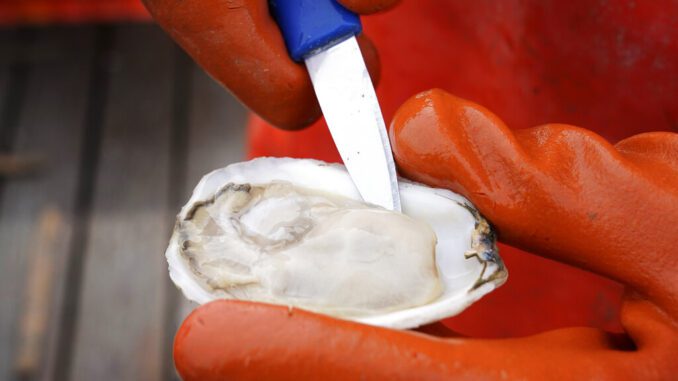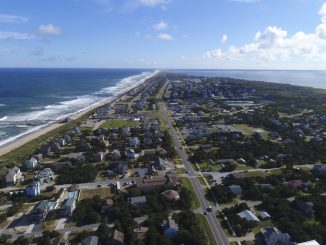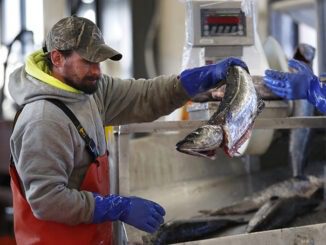
RALEIGH — New research has found that North Carolina’s shellfish industry provides over $27 million in economic impact and 532 jobs in the state. Until 2016, the industry’s economic impact primarily came from the harvest of wild oysters and clams.
In 2019, farmed oysters contributed over $14 million to state gross domestic product and 271 jobs, according to research published by Eric Edwards of NC State University’s Department of Agricultural and Resource Economics.
The findings stem from a collaborative project led by North Carolina Sea Grant in partnership with researchers at NC State University, Appalachian State University, Duke University, and the University of North Carolina Wilmington, and funded by the N.C. Commercial Fishing Resource Fund Grant Program.
“The goal of the research was to better understand the economic impact of North Carolina’s seafood industry,” says Jane Harrison, North Carolina Sea Grant’s coastal economics specialist and a project lead. “The shellfish results indicate the strength of the growing aquaculture sector.”
Supply and demand of farmed oysters have risen exponentially in North Carolina over the past five years. “Restaurants that once only served out-of-state shellfish now proudly advertise multiple N.C. oyster varieties,” Harrison says.
Farmed oysters are typically sold on the half-shell, whereas wild oysters are more common at oyster roasts and often already shucked.
Opportunities to try local shellfish can be found along the NC Oyster Trail, a recent partnership that showcases oyster growers, seafood restaurants, and seafood festivals and events throughout the state.
For N.C. seafood economic research highlights, as well as formal reports and methodology, visit go.ncsu.edu/NCSeafoodDemand.




